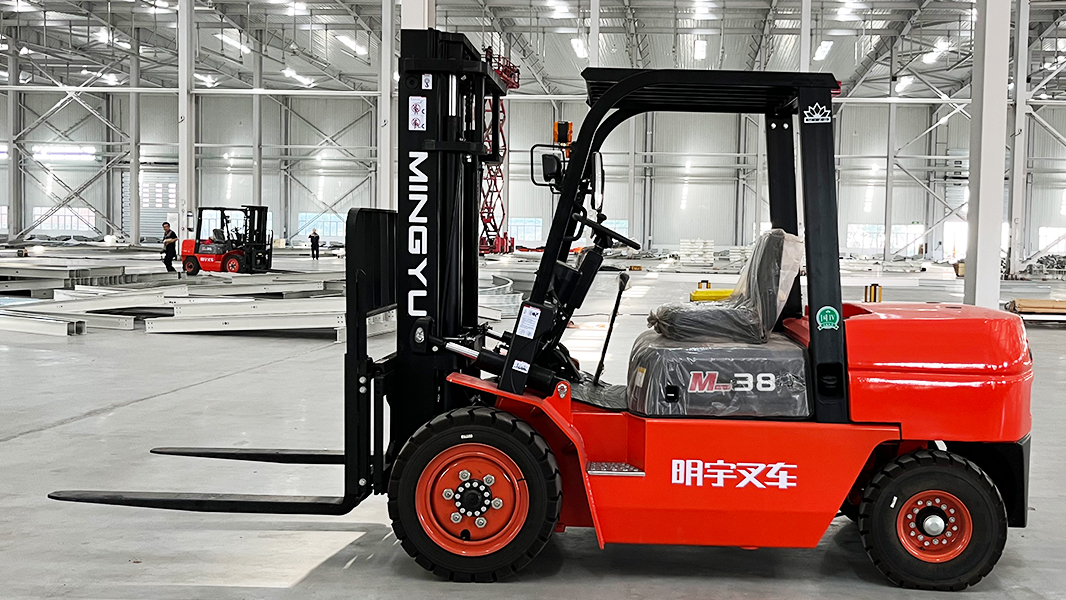I. Introduction
Forklifts are the backbone of modern material handling, facilitating the efficient movement of goods in warehouses, construction sites, and industrial settings. Among the diverse types available, electric and diesel forklifts stand out as primary choices, each offering distinct advantages and disadvantages. While both serve the fundamental purpose of lifting and transporting loads, their power sources and operational characteristics differ significantly. This article aims to provide a detailed comparison of electric and diesel forklifts, examining their power systems, performance capabilities, environmental impact, maintenance requirements, and suitability for various applications. By understanding these differences, businesses can make informed decisions to optimize their material handling operations.
II. Power Source and Operation
Electric forklifts are powered by rechargeable batteries, typically lead-acid or lithium-ion. Charging systems vary, with options for standard charging and fast charging.
Electric motors provide smooth and precise control, enabling efficient operation and maneuverability.
Regenerative braking systems recapture energy during deceleration, enhancing energy efficiency and extending battery life.
Electric forklifts operate quietly and produce zero emissions at the point of use, making them ideal for indoor environments.
Diesel forklifts utilize internal combustion engines fueled by diesel, providing robust power and torque.
Exhaust emissions, including particulate matter and nitrogen oxides, require adequate ventilation in indoor settings.
Diesel engines generate significant noise and vibration, which can impact operator comfort.
Fuel storage and handling require adherence to safety regulations and environmental guidelines.
C. Comparative Analysis:
Electric forklifts offer superior energy efficiency and environmental performance, while diesel forklifts provide greater power and continuous operation. Electric forklifts are much quieter, and produce no direct emissions. Diesel forklifts require more maintenance on the engine, and fuel systems.
III. Performance and Capabilities
A. Electric Forklift Performance:
Electric forklifts offer rapid acceleration and smooth speed control, ideal for precise maneuvering in tight spaces.
Lifting capacity and stability vary depending on the model, with modern electric forklifts capable of handling heavy loads.
Operating time is limited by battery life, requiring recharging during extended shifts.
Electric forklifts excel in indoor environments and on smooth surfaces, where their maneuverability and precision are advantageous.
B. Diesel Forklift Performance:
Diesel forklifts provide high power and torque, enabling them to handle heavy loads and navigate rough terrain.
They are well-suited for outdoor environments and harsh weather conditions, where their robust construction and continuous operation are essential.
Refueling is quick and convenient, allowing for extended operating hours.
Diesel forklifts provide consistant power output, even under heavy load.
C. Side-by-Side Comparison:
Diesel forklifts offer greater power and continuous operation, while electric forklifts provide superior maneuverability and environmental performance. Lifting capacity is available in both styles of forklifts.
IV. Environmental Impact and Operating Costs
A. Electric Forklift Environmental Impact:
Electric forklifts produce zero emissions at the point of use, contributing to cleaner air quality.
Battery disposal and recycling require careful management to minimize environmental impact.
The overall carbon footprint depends on the source of electricity generation.
B. Diesel Forklift Environmental Impact:
Diesel forklifts generate exhaust emissions that contribute to air pollution and greenhouse gas emissions.
Fuel consumption and carbon footprint are significant factors in environmental considerations.
Noise pollution is a consideration.
C. Operating Costs:
Electricity costs are generally lower than diesel fuel costs, resulting in potential savings.
Maintenance and repair expenses for electric forklifts are typically lower due to fewer moving parts.
Battery replacement and charging infrastructure can represent significant upfront costs.
Diesel forklifts have higher fuel and engine maintenance costs.
V. Maintenance and Durability
A. Electric Forklift Maintenance:
Battery maintenance, including proper charging and electrolyte levels, is crucial for optimal performance.
Electric motor and control system maintenance is relatively simple, requiring periodic inspections and component replacements.
Reduced number of moving parts results in lower maintenance requirements compared to diesel forklifts.
B. Diesel Forklift Maintenance:
Engine maintenance, including fluid changes and filter replacements, is essential for reliable operation.
Exhaust system and fuel system maintenance require regular inspections and repairs.
Wear and tear on mechanical components can result in higher maintenance costs.
C. Comparative Analysis:
Electric forklifts have fewer moving parts, and therefore require less maintenance. Diesel forklifts have more complex engine and fuel systems, and require more maintenance.
VI. Application and Suitability
A. Electric Forklift Applications:
Indoor warehouses and distribution centers, where clean air and quiet operation are essential.
Food and beverage industry, where hygiene and environmental standards are critical.
Pharmaceutical and clean environments, where emissions-free operation is mandatory.
B. Diesel Forklift Applications:
Outdoor construction sites and lumber yards, where heavy lifting and rough terrain are common.
Heavy-duty industrial applications, such as steel mills and foundries, where robust power is required.
Ports and shipping yards, where continuous operation and heavy load handling are essential.
C. Choosing the Right Forklift:
The environment the forklift operates in is the most important factor. Indoor, clean environments are ideal for electric forklifts, where as outdoor, heavy duty applications are best suited for diesel forklifts.
VII. Conclusion
In conclusion, electric and diesel forklifts offer distinct advantages and disadvantages, catering to different operational needs. Electric forklifts excel in indoor environments, providing clean and quiet operation, while diesel forklifts offer robust power and continuous operation for outdoor and heavy-duty applications. Selecting the appropriate forklift based on environmental considerations, operational requirements, and cost factors is crucial for optimizing material handling efficiency and sustainability. As technology advances, the landscape of forklift options continues to evolve, with increasing focus on energy efficiency and environmental responsibility.
Post time:Mar.31.2025



